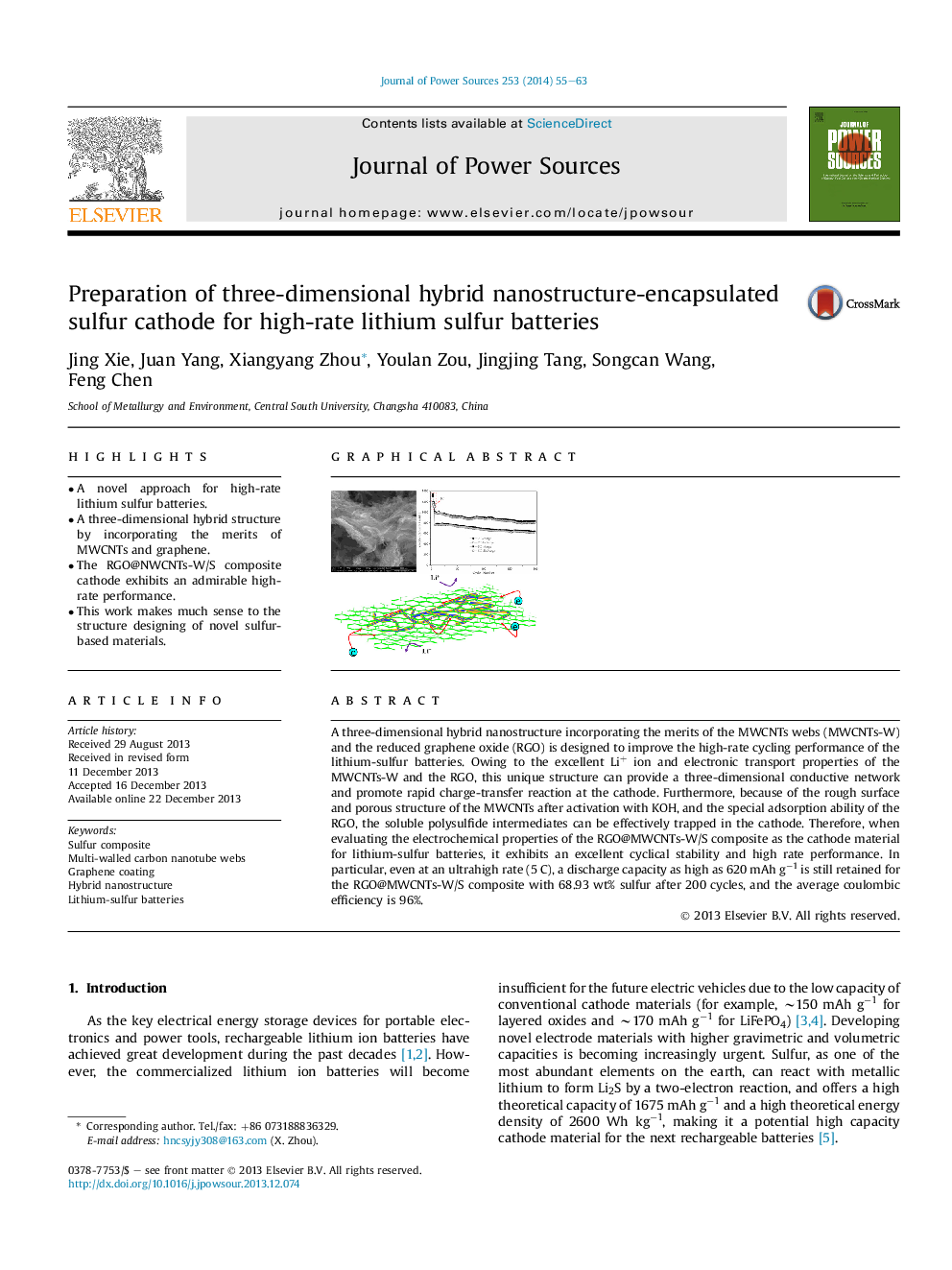| Article ID | Journal | Published Year | Pages | File Type |
|---|---|---|---|---|
| 1287086 | Journal of Power Sources | 2014 | 9 Pages |
•A novel approach for high-rate lithium sulfur batteries.•A three-dimensional hybrid structure by incorporating the merits of MWCNTs and graphene.•The RGO@NWCNTs-W/S composite cathode exhibits an admirable high-rate performance.•This work makes much sense to the structure designing of novel sulfur-based materials.
A three-dimensional hybrid nanostructure incorporating the merits of the MWCNTs webs (MWCNTs-W) and the reduced graphene oxide (RGO) is designed to improve the high-rate cycling performance of the lithium-sulfur batteries. Owing to the excellent Li+ ion and electronic transport properties of the MWCNTs-W and the RGO, this unique structure can provide a three-dimensional conductive network and promote rapid charge-transfer reaction at the cathode. Furthermore, because of the rough surface and porous structure of the MWCNTs after activation with KOH, and the special adsorption ability of the RGO, the soluble polysulfide intermediates can be effectively trapped in the cathode. Therefore, when evaluating the electrochemical properties of the RGO@MWCNTs-W/S composite as the cathode material for lithium-sulfur batteries, it exhibits an excellent cyclical stability and high rate performance. In particular, even at an ultrahigh rate (5 C), a discharge capacity as high as 620 mAh g−1 is still retained for the RGO@MWCNTs-W/S composite with 68.93 wt% sulfur after 200 cycles, and the average coulombic efficiency is 96%.
Graphical abstractFigure optionsDownload full-size imageDownload as PowerPoint slide
